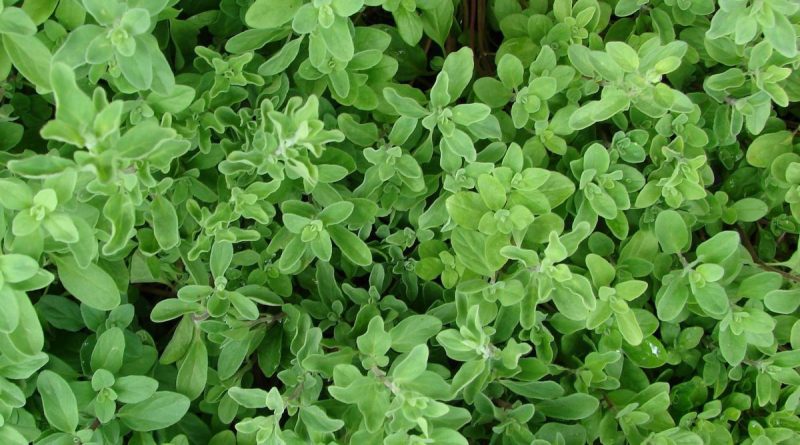Marjoram – planting, growing and harvesting

Marjoram (Origanum majorana) is native to the eastern Mediterranean and southern Turkey.
Marjoram can be easily confused with oregano, the two species being of the same genus. The scientific name of marjoram is Origanum majorana (synonym Majorana hortensis) and oregano is called Origanum vulgare, being another species. Even though the plants have many similar characteristics, marjoram has a more delicate and sweeter aroma compared to oregano.
Use
Marjoram is used as an aromatic plant and spice, due to its high content in essential oils. It is less known and used in local cuisine, being more popular in Italian dishes.
Botanical characteristics
Marjoram is a perennial plant in countries with mild winters. It develops a horizontal rhizome in the soil, from which start the thin stems, provided with hairs. The leaves are small, oval, covered with fine hairs. The flowers are pink-purple and bloom in summer, in July-August.



Environmental requirements
This species is not resistant to low winter temperatures. For optimal growth, it does not prefer temperatures to drop below 15℃. It needs to be planted in sunny places, in temperate soils, moist, with a slightly acidic pH, to neutral. Water must be administered during dry periods, the plant’s water requirements being moderate.
Cultivation
Marjoram can be grown through direct sowing, by planting rooted cuttings, by dividing the roots, or even through layering.
Crop establishment through sowing or other methods can be done in gardens after the danger of late frosts has passed (April-May). Seedlings can also be produced in polyhouse or hotbeds, starting 6-8 weeks before planting outside. Marjoram is also grown successfully in pots. For optimal germination, the temperature should be maintained at 15-20℃ and the substrate damp.
In order to propagate through cuttings, they can be harvested when the stems have a slightly woody basal part. Cuttings from the stem portion, 15-20 cm long, are harvested from which the basal leaves have to be removed and rooted in a damp substrate. The appearance of new growths is a sign that the cuttings are well rooted and can be transplanted into larger pots or in the garden.
Given that this species forms horizontal rhizomes in the soil, it is possible to propagate marjoram by dividing them, when the plants are sufficiently mature and hardened.
In the case of layering, when the stems are long enough, they can be bent and fixed in the ground, so that on the buried portion to form roots.
In the garden, marjoram can be transplanted in 40 cm apart rows, while the distance between plants has to be 30 cm.
Care
The care works consist of controlling the weeds, irrigating the crop during droughts, and fighting diseases and pests. During the period of active plant growth, stem pruning or pinching of the growing tips can be carried out so that the plant develops many branches.
In the case of plants grown in flowerpots or in the garden, to ensure their nutrient requirements, a specially formulated fertilizer can be administered regularly.
Recommended products
-
You can find products on a different store
Change Store -
You can find products on a different store
Change Store -
You can find products on a different store
Change Store -
You can find products on a different store
Change Store -
You can find products on a different store
Change Store -
You can find products on a different store
Change Store -
You can find products on a different store
Change Store -
You can find products on a different store
Change Store -
You can find products on a different store
Change Store -
You can find products on a different store
Change Store -
You can find products on a different store
Change Store -
You can find products on a different store
Change Store -
You can find products on a different store
Change Store -
You can find products on a different store
Change Store -
You can find products on a different store
Change Store -
You can find products on a different store
Change Store -
You can find products on a different store
Change Store -
You can find products on a different store
Change Store -
You can find products on a different store
Change Store -
You can find products on a different store
Change Store -
You can find products on a different store
Change Store -
You can find products on a different store
Change Store -
You can find products on a different store
Change Store -
You can find products on a different store
Change Store
Harvesting and storage
Marjoram can be harvested whenever its edible parts are needed and before flowering, the plants should be cut a few cm above the surface of the substrate. Several harvests can be made per year.
The leaves and shoots can be eaten fresh or dried. The stems can be harvested completely. They can be dried while tied in bundles and after drying in well-ventilated places, the plants should be stored in places with low humidity. In order to benefit from a stronger aroma, the leaves can be crushed just before use.
Diseases and pests
Plants may show symptoms of rotting in case of excessive moisture at the roots and for this reason, watering with too much water is not recommended. Symptoms of thrips, whiteflies, aphids, or mites infestations can be observed on the leaves, in which case approved control products have to be applied. If the attack is reduced, the affected areas can be cut to remove the pests.















































































































































































































































































































































































































































